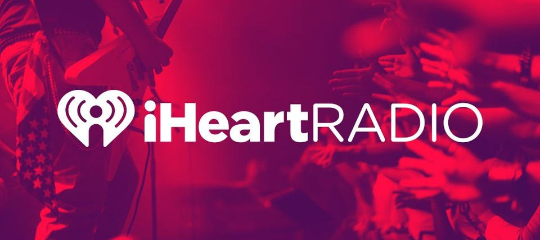
- Blog
- Jul 07, 2019
Any marketer worth his salt knows the importance of attribution.
Proper attribution is the difference between a full understanding of the ROI that your marketing produces and simply making an educated guess.
While many of the most popular marketing platforms on the market today include attribution features, most fall short of full-funnel, cross-channel attribution that modern marketing teams require. Your ability to optimize your ad spend and campaigns relies solely on your understanding of what engagements played the biggest role in the prospect’s ultimate decision to purchase.
Looking for a marketing attribution tool?
The LeadsRx attribution software measures any and all channels, providing an unbiased look at what channels are working, and how they are working together, to create customer paths to purchase.
To learn more about multi-touch attribution and how the insights from cross-channel data can help you improve return on ad spend, please book a demo today.
If you do not take a third-party, unbiased, cross-channel approach to measuring your marketing, then you are going to be left trying to piece together a disconnected set of results.
Without that complete picture, the optimizations that you run aren’t much better than a shot in the dark. Attribution provides efficiency gains of 15-30%.
As companies begin to look for a new edge over the competition, they often come to us after discovering that they weren’t appropriately tracking a large portion of their marketing budget. Almost without fail, marketers are surprised when they see the attributed cost per conversion.
Often, there were entire channels and campaigns that were completely “off the books” with no idea how the channel was performing, despite spending surprisingly large amounts on the platform. All because they had no simple way to connect the channel’s performance to their attribution systems.
The problem with marketing platform-based (Google and Facebook) attribution systems is that they are often too tightly aligned with the features of the platform. They allow you to accurately track everything that you do within that platform, but integrations and connections for channels outside of their ecosystem are wholly reliant on their development team, or some overwrought Zapier setup. Google and Facebook simply don’t want to share data, credit, attribution or access to each other’s platform.
As you look for an attribution platform that will help you to gain a full, top-down view of your organization, these are the features that you should be looking for:
#1. A Range of Attribution Models
Any effective attribution platform will provide a range of different attribution models that you can use to track your campaigns. Having a wide array of choices, even if you don’t plan on using them, is good because it keeps you flexible down the road. Changing to a new attribution platform will be an easier process now than it will be later when it is fully integrated into every campaign.
Here are the different attribution models offered at LeadsRx:
- First touch
- Last touch
- Closer touch
- Any touch
- Linear multi-touch
- Weighted multi-touch
- Algorithmic attribution
77% of marketing professionals say they believe they’re not using the right attribution models, or they don’t know. Any effective platform should offer at least a majority of these attribution models. Of course, algorithmic attribution models are typically customized for your own operations and vary by company.
#2. Full-Funnel Attribution
Full-funnel attribution is worth its weight in gold. 47% of marketers say improving the efficiency in the sales funnel is their top sales priority. While most attribution platforms only provide lower-funnel attribution, LeadsRx offers full-funnel attribution that can incorporate impressions, clicks, and all engagements that a brand has with a customer as they make their decision to buy.
A prospect might engage with dozens of different pieces of content from your company as they build familiarity and become more interested in your product. Understanding what actions had what impact on their ultimate buying decision is necessary for optimization throughout the funnel. This is where the truly impressive gains reside.
Authentic full-funnel attribution also tracks prospects across devices. You want to know when a customer engages with your marketing whether they are on their desktop, laptop, smartphone, or tablet. 74% of marketers say matching customers across multiple devices is important to growth, but only 14% has a ‘strong capability to do so.
Source: Overdrive Interactive
Let’s review a full-funnel attribution example: a prospect interacted with a company through paid search, display, and email marketing campaigns. The last campaign that the prospect interacted with was paid search before coming to the buying decision (conversion). In this model, half of the conversion credit goes to paid search, while display and email split the other half of the credit.
If a company had only used last-touch attribution instead of full-funnel attribution, display and email would have received no credit for the customer’s decision to buy, despite the fact that they had been exposed to marketing from the company on both channels.
Without full-funnel attribution, you miss out on important details that you could use to optimize and shape future strategies.
#3. Cross-Channel
This may seem a little redundant based on our previous example, but it is possible to have full-funnel attribution without it being cross-channel.
It’s important that you are able to connect campaigns across channels and fully understand your customer’s journeys, no matter where they take them. 43% of marketers believe an ideal measurement solution provides a unified cross-channel view.
Cross-channel attribution means that you can follow your prospects and understand the different steps that they take on their journey to awareness and being ready to buy from you.
If a prospect first finds your website on Google, then follows you on social media, clicks an ad of yours, then ultimately visits your retail location — every step in that process is important and provides valuable insight into the behavior of your customers.
True cross-channel marketing isn’t limited to digital engagements either. You need a solution that is able to detect when your customers find your advertising campaigns on TV, radio, and other more traditional channels as well.
#4. Broadcast Attribution Platforms
Broadcast attribution is absolutely critical for companies that advertise on TV, radio, and other offline channels. In most attribution platforms, you just simply aren’t able to connect your offline and online channels. They provide no smart way to identify who interacted with which advertisements. Those that do typically don’t do broadcast attribution well.
Here at LeadsRx, we built our platform from the ground up with broadcast attribution in mind. Our system is able to detect prospects that have interacted with your offline advertisements through several variables:
- Response windows
- Impressions
- Predictive Analysis
- Geofencing
We also offer our completely unique “second breath of broadcast” attribution which uses custom decay curves to ensure that all value generated through offline broadcast channels are accurately accounted for.
#5. Easy Setup
One thing that many companies overlook as they evaluate marketing attribution platforms is the ease of setup. Some attribution platforms can be downright confusing. You’ll have different pixels for every action that you want to track. If you use the wrong pixel in the wrong campaign, you risk completely invalidating your attribution results.
At LeadsRx, we knew that we had to build a solution that was easy for our customers to understand and use. Instead of generating many different pixels to track all of your marketing campaigns, LeadsRx uses a single Universal Conversion Tracking Pixel.
That’s right.
One single pixel that you can use to track all of your advertising sources and conversions from your marketing campaigns again. You’ll never need to arbitrate between vendors or different systems. Our universal pixel is “eCommerce aware” as well, meaning that it will automatically prevent duplicated orders within your system from being counted. It doesn’t get much easier than that.
#6. The Right Attribution Platform Integrations
Modern marketing teams piece together many different tools and systems to create a full-stack solution for their team. That’s a good thing because it means are never too reliant on one single tool.
However, those systems also have to connect with one another to ensure that all of your data is being used across your entire marketing strategy. Most marketers think that campaign tracking and tagging is their biggest attribution challenge. Without centralization, there is sure to be a lack of progress, and most companies struggle with data centralization in marketing. The truth is that most companies have giant gaps in this area due to using so many different platforms.
When it comes to your marketing attribution platform, you can’t slack on integrations. If you want full-funnel attribution, you have to make sure that your attribution platform reliably connects with all of the other software solutions that your team uses.
We built LeadsRx with these facts in mind. Our goal was to ensure that our system could reliably integrate with all of the most popular marketing platforms on the market today.
Here’s a small sampling of the different attribution integrations that we offer:
- HubSpot
- Salesforce
- Shopify
- Ninjaforms
- Callrail
- WordPress/Woocommerce
- Google Analytics
- AppsFlyer
- Optimizely
We want to make sure that our customers can use our platform to bolster their marketing campaigns with all of the most popular tools.
#7. In-Depth Attribution Platform Reporting
What good is an attribution platform if it doesn’t provide you deep, detailed reporting? Your attribution system doesn’t replace your complete analytics and tracking setup, but it should definitely augment it. Attribution software can also be an excellent way to audit the performance and reporting of any particular vendor, software or dataset.
Make sure that the attribution solution you decide to go with is able to provide deep analytics and reporting to help you better understand your campaigns.
#8. Smart Recommendations & Consulting
While not all systems offer this, smart recommendations can help you to identify holes in your strategy or areas for improvement in individual campaigns. Attribution brands should not only provide excellent tools but educate their audience on how to use them and maximize their return on investment.
For problems or questions that content can’t quench, it might be a good idea to develop relationships with attribution tool brands that also offer some limited Insights and Attribution consulting options. If your company knows that you need deeper attribution but doesn’t have a lot of experience in attribution and tracking, you may need to accept that you’ll need some extra help.
Attribution Platforms Facilitate Growth
Attribution platforms are perhaps the most critical tool in the modern marketing team’s arsenal. It’s the glue that holds the separate channels and campaigns together and makes sense of what would otherwise be a chaotic operation.
If you are looking to get started with attribution, schedule a free product demo of LeadsRx.





